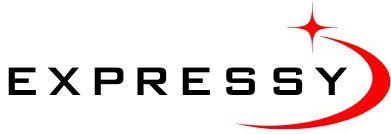In the rapidly evolving landscape of modern business, organizations face an ever-increasing demand for efficiency, transparency, and data-driven decision-making. Siloed departments, disparate software solutions, and fragmented data inevitably lead to operational bottlenecks, missed opportunities, and a diluted competitive edge. This challenge is precisely what ERP systems are designed to overcome, offering a powerful solution to integrate, streamline, and optimize business processes across an entire enterprise.
From manufacturing floors to service-based industries, from global conglomerates to rapidly scaling SMEs, the right ERP solution acts as the central nervous system of an organization, fostering collaboration, enhancing productivity, and providing a holistic view of operations. This comprehensive guide will first define what is an ERP system, exploring its core functionalities and the profound impact it has on business performance. We will then delve into the dynamic and technologically advanced market of the Middle East, specifically examining the crucial role and unique considerations of an ERP system in Dubai, a city at the forefront of digital transformation and business innovation.
Understanding the Core: What is an ERP System?
ERP, or Enterprise Resource Planning, is a type of software system that organizations use to manage day-to-day business activities such as accounting, procurement, project management, risk management, compliance, and supply chain operations. At its heart, an ERP system integrates all facets of an operation, including product planning, development, manufacturing, sales, and marketing, into a single, comprehensive database and application.
The Genesis of ERP:
The concept of ERP evolved from Material Requirements Planning (MRP) in the 1970s, which focused primarily on manufacturing processes. MRP II (Manufacturing Resource Planning) emerged in the 1980s, expanding to include other manufacturing processes like shop floor and financial planning. By the 1990s, the concept broadened further to encompass functions beyond manufacturing, such as finance, human resources, and supply chain, leading to the term “Enterprise Resource Planning.”
Key Characteristics of an ERP System:
- Integrated Data and Centralized Database: This is the defining characteristic. Instead of separate databases for different departments, an ERP system uses a single, shared database. This ensures data consistency, eliminates redundancy, and provides a “single source of truth” across the organization.
- Modular Structure: ERP systems are composed of various modules, each designed to manage specific business functions (e.g., finance, HR, sales, inventory). These modules are interconnected and share information seamlessly.
- Real-Time Operations: Data entered into one module is immediately available to other relevant modules, providing real-time visibility into business operations. This enables faster decision-making and quicker responses to market changes.
- Common User Interface: While modules handle different functions, they typically share a consistent user interface, making it easier for users to navigate and learn the system.
- Automation of Core Business Processes: ERP automates many routine tasks, from order processing and invoice generation to production scheduling and financial reporting, significantly reducing manual effort and human error.
Core Modules of an ERP System:
A typical ERP system comprises several interconnected modules, each handling a specific business function:
- Financial Management (Finance & Accounting): The backbone of any ERP, this module handles general ledger, accounts payable, accounts receivable, budgeting, financial reporting, asset management, and tax management. It provides a comprehensive view of an organization’s financial health.
- Human Resources Management (HRM/HRIS): Manages all aspects of employee lifecycle, including recruitment, onboarding, payroll, time & attendance, leave management, performance appraisal, benefits administration, and talent management.
- Supply Chain Management (SCM): Oversees the entire supply chain, from procurement and inventory management to logistics, warehousing, and supplier management. It optimizes the flow of goods and information.
- Manufacturing: Supports production planning, material requirements planning (MRP), shop floor control, quality management, and product lifecycle management (PLM).
- Sales and Marketing (CRM – Customer Relationship Management): Manages customer interactions, lead generation, sales order processing, pricing, sales forecasting, and customer service. (Note: While CRM can be a standalone system, it’s often integrated or a module within ERP).
- Project Management: Helps plan, execute, and track projects, managing resources, budgets, and timelines.
- Procurement/Purchasing: Manages the acquisition of goods and services, including vendor management, purchase order generation, and invoice matching.
- Inventory Management: Tracks stock levels, manages warehouses, optimizes inventory turns, and helps prevent stockouts or overstocking.
- Reporting and Analytics: Provides tools to generate customizable reports, dashboards, and advanced analytics to gain insights from the integrated data for strategic decision-making.
Types of ERP Systems:
- On-Premise ERP: Software is installed and run on the company’s own servers. Requires significant upfront investment in hardware, licenses, and IT staff.
- Cloud-based ERP (SaaS ERP): Hosted on the vendor’s servers and accessed via a web browser. Offered as a subscription service, reducing upfront costs and IT burden. This is the dominant and fastest-growing model today.
- Hybrid ERP: A mix of on-premise and cloud deployments, allowing companies to keep sensitive data on-premise while leveraging cloud benefits for other functions.
In essence, an ERP system serves as the central nervous system of a business, providing a unified platform that breaks down departmental silos, automates processes, and delivers real-time data for better decision-making, ultimately driving efficiency and competitive advantage.
The Transformative Impact: Why Businesses Need an ERP System
Implementing an ERP system is a strategic investment that fundamentally transforms how a business operates, yielding a wide array of benefits that directly contribute to efficiency, profitability, and growth. It’s about moving from reactive operations to proactive, data-driven management.
1. Enhanced Operational Efficiency:
- Process Automation: ERP automates repetitive, manual tasks across various departments (e.g., order processing, invoicing, financial reconciliation). This frees up employees’ time from administrative work, allowing them to focus on more strategic, value-added activities.
- Standardized Workflows: By imposing consistent workflows across the organization, ERP reduces variations and ensures that best practices are followed, leading to higher productivity and quality.
- Reduced Duplication: A centralized database eliminates the need for redundant data entry across different systems, minimizing errors and saving time.
2. Improved Data Accuracy and Single Source of Truth:
- With a unified database, all departments access the same, real-time information. This “single source of truth” eliminates discrepancies that arise from disparate systems, leading to highly accurate data for reporting and analysis.
- This accuracy is critical for compliance, financial reporting, and audit readiness.
3. Real-Time Visibility and Informed Decision-Making:
- ERP provides comprehensive, real-time insights into every aspect of the business – from sales figures and inventory levels to production schedules and financial performance.
- Managers and executives can access customizable dashboards and reports to quickly identify trends, bottlenecks, and opportunities. This data-driven visibility enables faster, more informed strategic and operational decisions.
4. Cost Savings:
- Reduced Operational Costs: Automation, streamlined processes, and reduced errors lead to lower labor costs and fewer rework expenses.
- Optimized Inventory: Better inventory management (tracking, forecasting) reduces holding costs, minimizes waste, and prevents stockouts.
- Improved Procurement: Centralized purchasing and better supplier management can lead to bulk discounts and optimized spending.
- Reduced IT Costs (for Cloud ERP): Lower hardware investments, maintenance, and IT staff requirements.
5. Enhanced Collaboration and Communication:
- By breaking down departmental silos, ERP fosters cross-functional collaboration. Information flows seamlessly between departments, ensuring everyone works with the same updated data and is aligned on common goals.
- Improved communication between sales, production, finance, and supply chain teams.
6. Better Customer Service and Relationship Management:
- Integrated CRM functionalities within ERP allow for a 360-degree view of customers, including their purchase history, interactions, and support requests.
- This enables personalized service, faster order fulfillment, accurate order tracking, and more responsive customer support, leading to higher customer satisfaction and loyalty.
7. Regulatory Compliance and Risk Mitigation:
- ERP systems help organizations adhere to industry-specific regulations, financial accounting standards (e.g., IFRS), and tax laws by automating compliance checks and generating required reports.
- Robust audit trails and clear data records enhance accountability and reduce the risk of non-compliance fines or legal issues.
- Better financial control and fraud detection mechanisms.
8. Improved Supply Chain Management:
- From forecasting demand to managing supplier relationships and optimizing logistics, ERP provides end-to-end visibility and control over the supply chain. This leads to more efficient inventory management, reduced lead times, and better supplier performance.
9. Scalability and Business Growth:
- As a business grows, its processes and data volume increase exponentially. A well-implemented ERP system is designed to scale, accommodating more users, transactions, new modules, and global operations without requiring a complete system overhaul.
- It provides the necessary infrastructure to support business expansion and diversification.
10. Competitive Advantage:
- By operating more efficiently, making faster data-driven decisions, reducing costs, and delivering superior customer service, businesses equipped with ERP gain a significant competitive edge in the market.
In essence, an ERP system moves a business from reactive problem-solving to proactive strategic planning, acting as an indispensable tool for achieving operational excellence and sustainable growth in today’s complex business environment.
The Dynamic Landscape: ERP System in Dubai
Dubai, a global business hub, stands at the forefront of digital transformation and innovation. Its rapid economic diversification, booming industries, and strategic location as a bridge between East and West create a highly competitive and technologically advanced business environment. In such a landscape, the adoption of a robust ERP system in Dubai is not merely an advantage but a strategic necessity for businesses aiming for efficiency, compliance, and sustained growth.
Unique Characteristics and Drivers for ERP Adoption in Dubai:
- Rapid Economic Growth and Diversification: Dubai’s economy is constantly evolving, with significant investments in logistics, trade, tourism, finance, and technology. Businesses in these sectors require agile ERP systems that can adapt to rapid changes, support new business models, and manage complex operations across diverse industries.
- High Volume of Trade and Commerce: As a major trading hub, Dubai businesses deal with vast volumes of international transactions, complex supply chains, and multi-currency operations. An ERP system in Dubai must offer robust capabilities for inventory management, procurement, sales order processing, and multi-currency accounting to handle this complexity efficiently.
- Strict Regulatory Environment and Compliance: The UAE has stringent regulatory frameworks, including:
- VAT (Value Added Tax): Introduced in 2018, accurate VAT calculation, invoicing, and reporting are crucial. An ERP system must be fully compliant with UAE VAT laws.
- Corporate Tax: Effective June 1, 2023, Corporate Tax requires precise financial record-keeping and reporting. ERP systems help ensure data readiness for CT compliance.
- WPS (Wage Protection System): For payroll, relevant for integrated HR/payroll modules.
- Specific Industry Regulations: Many industries (e.g., construction, healthcare, logistics) have unique regulatory requirements that ERP systems might need to accommodate through configuration or industry-specific modules.
- Multinational Workforce and Global Operations: Dubai attracts talent and businesses from around the world. An ERP system must support multi-language interfaces, multi-currency transactions, and be flexible enough to handle diverse HR and payroll requirements for an international workforce.
- Digital Transformation Agenda (Smart Dubai): The Dubai government is strongly pushing for digital transformation across all sectors. Businesses are encouraged to adopt smart technologies to enhance efficiency and contribute to the “Smart Dubai” vision. ERP systems align perfectly with this agenda by digitizing and integrating core business processes.
- Demand for Real-time Insights: In Dubai’s competitive market, quick and informed decision-making is paramount. Businesses need real-time data from their operations to respond to market shifts, optimize resource allocation, and identify growth opportunities. ERP provides this consolidated, up-to-the-minute view.
- Supply Chain Complexity: Dubai serves as a logistics and supply chain gateway. Businesses involved in import, export, and distribution require advanced SCM functionalities within their ERP to manage complex international logistics, customs procedures, and warehousing operations efficiently.
- Scalability for Growth: Many businesses in Dubai are experiencing rapid growth. An ERP system must be scalable enough to accommodate increasing transaction volumes, additional users, new business units, and geographical expansion without compromising performance.
- Integration with Local Ecosystem: The ability of an ERP system to integrate with local banks, payment gateways, e-government services, and other regional business applications is a significant advantage.
Key Considerations When Choosing an ERP System in Dubai:
- Localization and Compliance: Ensure the system is fully compliant with UAE VAT, Corporate Tax, and other relevant labor laws. Look for vendors with a strong local presence or partners.
- Industry-Specific Fit: Does the ERP solution have modules or functionalities tailored to your specific industry (e.g., real estate, trading, manufacturing, construction)?
- Scalability: Can the system grow with your business? Does it support multiple entities, currencies, and languages?
- Integration Capabilities: How well does it integrate with your existing systems (CRM, e-commerce, POS)?
- Cloud vs. On-Premise: Cloud ERP is generally favored for its flexibility, lower upfront costs, and remote accessibility, which aligns well with Dubai’s dynamic work environment.
- Implementation Partner: Choose a local implementation partner with proven experience in your industry and a deep understanding of the UAE market. Their expertise can be crucial for a successful deployment.
- Support and Training: Ensure the vendor offers comprehensive support and training services, preferably with local resources.
- Cost and ROI: Beyond the initial license/subscription, consider implementation costs, customization, training, and ongoing support. Clearly define the expected ROI.
Investing in the right ERP system in Dubai is a strategic move that not only optimizes internal operations but also empowers businesses to thrive in one of the world’s most competitive and innovative economic environments.
The Power of Integration: Modules and Their Synergies
The true strength of an ERP system lies in its ability to integrate disparate business functions into a single, cohesive platform. Each module, while powerful on its own, achieves maximum impact when seamlessly connected with others, creating powerful synergies that drive efficiency, accuracy, and strategic insights.
Let’s explore how key modules interact and why this integration is crucial for optimal business performance:
1. Financial Management (The Core Integrator):
- Integration with Sales: Sales orders initiated in the CRM/Sales module automatically trigger invoicing in Financials, update accounts receivable, and impact revenue recognition.
- Integration with Procurement: Purchase orders from the Procurement module flow to Accounts Payable, matching invoices with goods received, ensuring accurate payment processing.
- Integration with HR/Payroll: Payroll expenses from the HR module are automatically posted to the general ledger, impacting profitability and financial statements.
- Integration with Inventory/Manufacturing: Inventory valuation, cost of goods sold, and production costs are all tracked and reported through the financial module.
Synergy: The Financial module acts as the central repository for all monetary transactions, providing a real-time, comprehensive view of the company’s financial health. It ensures accurate financial reporting, simplifies budgeting, and aids in compliance.
2. Supply Chain Management (SCM):
- Integration with Inventory: The SCM module relies heavily on real-time inventory levels to manage warehousing, optimize stock, and plan logistics.
- Integration with Procurement: SCM uses data from Procurement (supplier lead times, pricing) to optimize purchasing decisions and ensure timely material availability.
- Integration with Manufacturing: SCM ensures raw materials are available for production schedules and manages the distribution of finished goods.
- Integration with Sales: Sales forecasts inform demand planning within SCM, ensuring adequate inventory to meet customer orders.
Synergy: SCM optimizes the entire flow of goods, from sourcing raw materials to delivering finished products. This leads to reduced inventory costs, improved delivery times, and enhanced customer satisfaction.
3. Manufacturing:
- Integration with Inventory: Tracks raw material consumption, work-in-progress, and finished goods inventory.
- Integration with Procurement: Generates purchase requisitions for raw materials based on production needs (MRP).
- Integration with Sales: Production schedules are influenced by sales forecasts and firm customer orders. Order status can be updated in real-time for sales teams.
- Integration with Finance: Tracks production costs (labor, material, overhead), contributing to accurate cost of goods sold calculations and profitability analysis.
Synergy: The Manufacturing module streamlines production processes, optimizes resource utilization, and ensures products are manufactured efficiently and on time, meeting quality standards and customer demand.
4. Human Resources Management (HRM):
- Integration with Payroll: Employee data (salaries, deductions, leave, bonuses) from HRM flows directly into the Payroll module for accurate and compliant payment processing.
- Integration with Finance: Payroll costs and benefits expenses are automatically posted to the general ledger, impacting financial statements.
- Integration with Project Management: Tracks employee time and allocates it to specific projects for accurate project costing.
Synergy: HRM centralizes all employee-related data, improving talent management, ensuring HR compliance, and streamlining payroll processes. This leads to better workforce management and reduced administrative burden.
5. Sales and Marketing (CRM):
- Integration with Inventory: Provides real-time visibility into product availability for sales teams, preventing overselling or promising unavailable items.
- Integration with Finance: Sales orders automatically generate invoices, update accounts receivable, and affect revenue.
- Integration with Supply Chain/Manufacturing: Sales forecasts inform production planning and inventory stocking levels.
- Integration with Project Management: For service-based companies, sales leads can convert into projects managed within the ERP.
Synergy: CRM within ERP enhances customer relationship management by providing a holistic view of customer interactions, streamlining the sales cycle, and improving customer service, ultimately driving revenue.
The Holistic View:
The power of an integrated ERP lies in its ability to eliminate data silos. When information from sales, finance, manufacturing, and HR is unified, businesses gain a comprehensive, real-time “single source of truth.” This allows for:
- End-to-End Visibility: Track processes from initial customer inquiry through order fulfillment and payment.
- Improved Reporting: Generate cross-functional reports that provide deeper insights into overall business performance.
- Enhanced Auditability: A clear trail of transactions across all modules simplifies audits and ensures compliance.
- Faster Decision-Making: Access to integrated, real-time data enables quick and informed responses to market changes or operational challenges.
This level of integration is not just about convenience; it’s about building a resilient, agile, and intelligently run enterprise capable of sustained growth and competitive dominance.
Implementation Journey: From Decision to Go-Live (and Beyond)
Implementing an ERP system is a significant undertaking, demanding careful planning, substantial resources, and a strategic approach. It’s a journey that, when managed effectively, can transform a business. However, it also presents challenges that need to be proactively addressed.
Key Phases of ERP Implementation:
-
Discovery & Planning (Phase 1):
- Define Goals and Requirements: Clearly articulate why you need an ERP, what problems you want to solve, and what specific functionalities are essential. This stage is crucial for setting expectations.
- Form a Project Team: Assemble a dedicated team with representatives from all key departments (Finance, HR, Sales, IT, Operations), led by a strong project manager.
- Vendor Selection: Based on your requirements, evaluate various ERP vendors. Consider industry fit, scalability, deployment options (cloud vs. on-premise), support, and pricing. For an ERP system in Dubai, consider local compliance and implementation partner expertise.
- Budgeting: Develop a realistic budget that includes software licenses/subscriptions, implementation services (consulting, customization, data migration), training, and ongoing support.
-
Design & Configuration (Phase 2):
- Process Mapping: Analyze and map your current business processes (“as-is”) and design optimized future processes (“to-be”) that leverage the ERP’s capabilities.
- System Configuration: Configure the chosen ERP software to align with your new processes and specific business rules. This involves setting up chart of accounts, workflows, user roles, reports, and master data.
- Customization (If Needed): Identify areas where customization is absolutely necessary (avoiding it where possible to simplify upgrades). Custom development should be minimal.
- Data Migration Strategy: Plan how existing data from legacy systems will be extracted, cleaned, transformed, and loaded into the new ERP.
-
Development & Testing (Phase 3):
- System Development: For any identified customizations or integrations, development work is done.
- Integration Testing: Test how well different modules of the ERP system work together and how it integrates with external systems.
- User Acceptance Testing (UAT): Key users from each department thoroughly test the system with real-world scenarios to ensure it meets business requirements and functions as expected. This is critical for user adoption.
- Data Migration Execution: Execute the planned data migration into the new system.
- Training: Conduct comprehensive training sessions for all end-users, tailored to their specific roles and modules.
-
Deployment & Go-Live (Phase 4):
- Final Data Load: Load any remaining real-time data just before go-live.
- System Cutover: Transition from the old system to the new ERP. This can be a “big bang” approach (all modules at once) or a phased rollout (module by module, or by department/location).
- Post-Go-Live Support: Provide intensive support during the initial period after go-live to address immediate issues and help users adapt.
-
Post-Implementation & Optimization (Phase 5):
- Monitoring & Optimization: Continuously monitor system performance, gather user feedback, and identify areas for optimization and refinement of processes.
- System Updates & Upgrades: Plan for regular software updates and upgrades to leverage new features and ensure security.
- Continuous Improvement: ERP implementation is not a one-time project. It’s an ongoing journey of improvement and adaptation to evolving business needs.
Common Challenges and How to Address Them:
- Resistance to Change:
- Solution: Involve users early, clearly communicate benefits, provide extensive training, and highlight how it simplifies their daily tasks.
- Poor Data Quality:
- Solution: Dedicate significant time and resources to data cleaning and validation before migration. “Garbage in, garbage out.”
- Scope Creep:
- Solution: Clearly define the project scope in the planning phase and manage change requests rigorously. Avoid unnecessary customizations.
- Inadequate Training:
- Solution: Provide hands-on, role-specific training. Offer ongoing support, user guides, and a dedicated helpdesk.
- Lack of Top Management Support:
- Solution: Secure strong executive sponsorship from the outset. Their visible support and commitment are vital.
- Choosing the Wrong Partner:
- Solution: For ERP system in Dubai, select an implementation partner with a proven track record, relevant industry experience, and a deep understanding of local regulations. Check references.
- Over-Customization:
- Solution: Stick to standard functionalities as much as possible. Customizations increase cost, complexity, and future upgrade challenges.
- Budget Overruns:
- Solution: Conduct a detailed cost-benefit analysis. Plan for contingency funds.
A successful ERP implementation transforms a business, but it requires a disciplined, collaborative, and well-managed approach, focusing on people, processes, and technology in equal measure.
Conclusion: The Unified Future of Business Operations
In an era defined by rapid technological advancement and escalating market demands, the fragmented approach to business management is no longer sustainable. The imperative for agility, accuracy, and holistic visibility has propelled the ERP system from a mere software solution to a strategic necessity for organizations striving for operational excellence and sustained growth. By integrating core business functions onto a single, unified platform, ERP systems empower businesses to break down departmental silos, automate complex processes, and gain real-time insights that drive superior decision-making.
The comprehensive benefits of an ERP system – from enhanced efficiency and significant cost savings to improved customer service and robust regulatory compliance – underscore its transformative power. It is the central nervous system that allows a business to operate with precision, adapt swiftly to market changes, and optimize every facet of its operations.
Nowhere is the importance of this digital unification more pronounced than in dynamic and digitally ambitious environments like Dubai. The unique regulatory landscape, diverse multinational workforce, high volume of trade, and a strong government push for digital transformation make an ERP system in Dubai not just a tool, but a critical enabler of competitive advantage. Businesses must meticulously choose solutions that offer localization, scalability, and seamless integration, partnered with experienced local implementation teams.
Ultimately, investing in an ERP system is an investment in the future resilience and prosperity of your enterprise. It’s about laying a solid foundation for growth, fostering seamless collaboration, and ensuring that your business is not just keeping pace with change, but leading it. Embrace the power of integration, and unlock the full potential of your organization.
5 FAQs About ERP Systems
-
What is the primary benefit of an ERP system compared to using separate software for each department? The primary benefit is data integration and a single source of truth. Instead of disparate systems with redundant data, an ERP system consolidates all business data into a single, centralized database. This eliminates data silos, ensures data consistency, reduces manual errors, and provides real-time, accurate insights across all departments, leading to better decision-making and enhanced efficiency.
-
Is ERP system implementation expensive, and what are the main cost components? Yes, ERP implementation can be a significant investment, but the costs vary widely based on the size of the business, the complexity of its processes, the chosen ERP vendor, and deployment model (cloud vs. on-premise). Main cost components typically include:
- Software Licenses/Subscriptions: One-time purchase for on-premise, recurring fees for cloud (SaaS).
- Implementation Services: Consulting fees for planning, configuration, customization, data migration, and training (often the largest cost component).
- Hardware (for On-Premise): Servers, network infrastructure.
- Customization: Cost for tailoring the software to specific business needs.
- Training: Ensuring users are proficient with the new system.
- Ongoing Maintenance & Support: Recurring fees for updates, technical support, and system health checks.
-
How long does it typically take to implement an ERP system? The implementation timeline for an ERP system varies greatly depending on the size and complexity of the organization, the scope of modules implemented, and the level of customization.
- For small businesses with straightforward processes, it could take 3 to 6 months.
- For medium-sized businesses, it might range from 6 to 18 months.
- For large enterprises with complex, global operations, implementations can take 18 months to several years. Factors like data migration complexity, user training, and the readiness of the project team significantly influence the timeline.
-
What are the key considerations for choosing an ERP system in Dubai specifically? When selecting an ERP system in Dubai, key considerations include:
- UAE Regulatory Compliance: Crucially, the system must support UAE VAT and Corporate Tax regulations for accurate calculations, invoicing, and reporting.
- Industry Fit: Ensure the ERP has modules or capabilities tailored to your specific industry (e.g., trading, manufacturing, construction, real estate).
- Multi-Currency and Multi-Language Support: Essential for Dubai’s international business environment.
- Scalability: The ability to scale with your business’s rapid growth in the dynamic Dubai market.
- Local Implementation Partner: A partner with proven experience in the UAE market, understanding local nuances and providing reliable support.
- Integration with Local Ecosystem: Compatibility with local banks, payment gateways, and potentially government e-services.
-
Will an ERP system replace the need for accountants or HR managers? No, an ERP system will not replace the need for accountants or HR managers; rather, it will transform and empower their roles.
- Accountants: Instead of spending time on manual data entry and reconciliation, they can focus on higher-value activities like financial analysis, strategic planning, risk management, and ensuring compliance.
- HR Managers: Will be freed from administrative tasks to focus on talent acquisition, employee development, performance management, and fostering a positive workplace culture. ERP automates the transactional, repetitive tasks, allowing these professionals to become more strategic and analytical contributors to the business.












